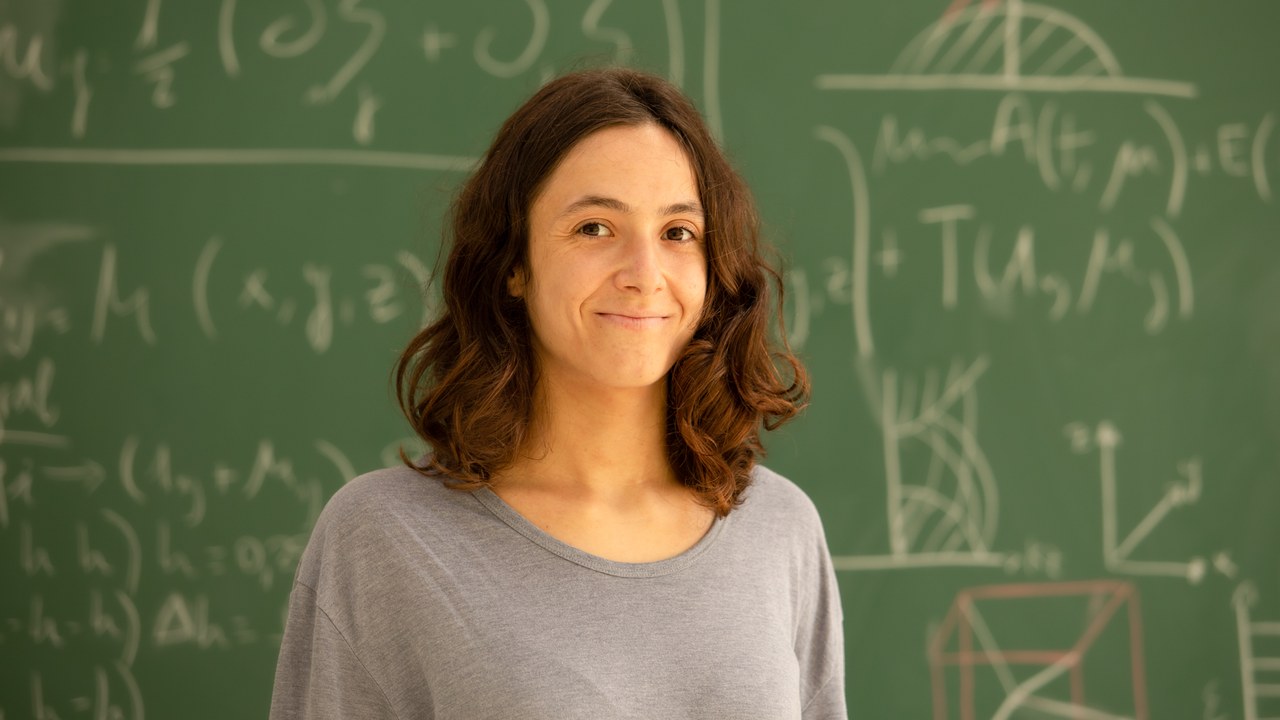Simulating structure formation in the Universe
PhD Program
- Speaker
-
Lurdes Ondaro
DIPC - When
-
2025/07/10
11:00 - Place
- Materials Physics Center
- Add to calendar
-
iCal

PhD Thesis defense by Lurdes Ondaro
Supervisors: Raúl Angulo (DIPC, Ikerbasque Research Professor)
Computational Cosmology
The Late Universe exhibits a complex hierarchy of cosmic structures, referred to as the Large Scale Structure (LSS) of the Universe: observable galaxies tracing dark matter haloes of many orders of magnitude in mass, themselves arranged in a vast cosmic web. Current and upcoming surveys will map LSS with unprecedented precision, offering an opportunity to test the Λ Cold Dark Matter (ΛCDM) cosmological paradigm. These observations may confirm the model, or reveal deviations that hint at new physics, potentially shedding light on the nature of dark matter and dark energy. Nevertheless, fully leveraging this data depends on our ability to make accurate, precise, and robust theoretical predictions. This involves understanding the process of structure formation – the primary process shaping the Late Universe–, and building fast models for LSS statistics. A successful theoretical framework must fully capture gravitational non-linearities, and account for uncertain astrophysical processes.
In this thesis, we use a simulation-based approach to model the Late Universe, covering various stages and regimes of structure formation. First, we simulate the formation of the first and smallest generation of haloes, which collapse from the smooth dark matter field. High-resolution simulations reveal that their internal structure deviates from the standard NFW profile, instead forming prompt cusps with a broken power-law shape, ∝ r −1.5 . This distinct structure provides an avenue for testing the nature of dark matter. The first haloes serve as the building blocks for subsequent generations, merging to form progressively larger structures. At low redshift, clusters — the largest gravitationally bound objects in the Universe — emerge. Their abundance is sensitive to the underlying cosmological model, including the recent expansion history of the Universe, making them valuable probes of the equation of state of dark energy. In this thesis, we investigate a key theoretical systematic in halo abundance predictions: the so-called non-universality. We develop a fast model capable of capturing this effect and achieveing a 2% accuracy in predicting halo mass functions in beyond-ΛCDM cosmologies, including those with massive neutrinos and dynamical dark energy. While clusters are largely dominated by gravity, smaller structures are significantly influenced by astrophysical processes. In particular, baryonic effects alter the gas distribution around group-sized haloes, making the connection between gas and underlying dark matter highly uncertain. This represents a major potential bias in weak lensing cosmology. Using hydrodynamic simulations, we analyse the gas density and velocity fields, identifying the non-gravitational processes driving these differences. This work will be highly valuable for developing flexible, physically motivated models to describe the low-redshift gas field, Iultimately helping to constrain uncertain astrophysical processes in future studies.
Overall, this thesis contributes to constructing precise theoretical models for LSS statistics, essential for extracting maximal and robust information from current and upcoming cosmological surveys.
